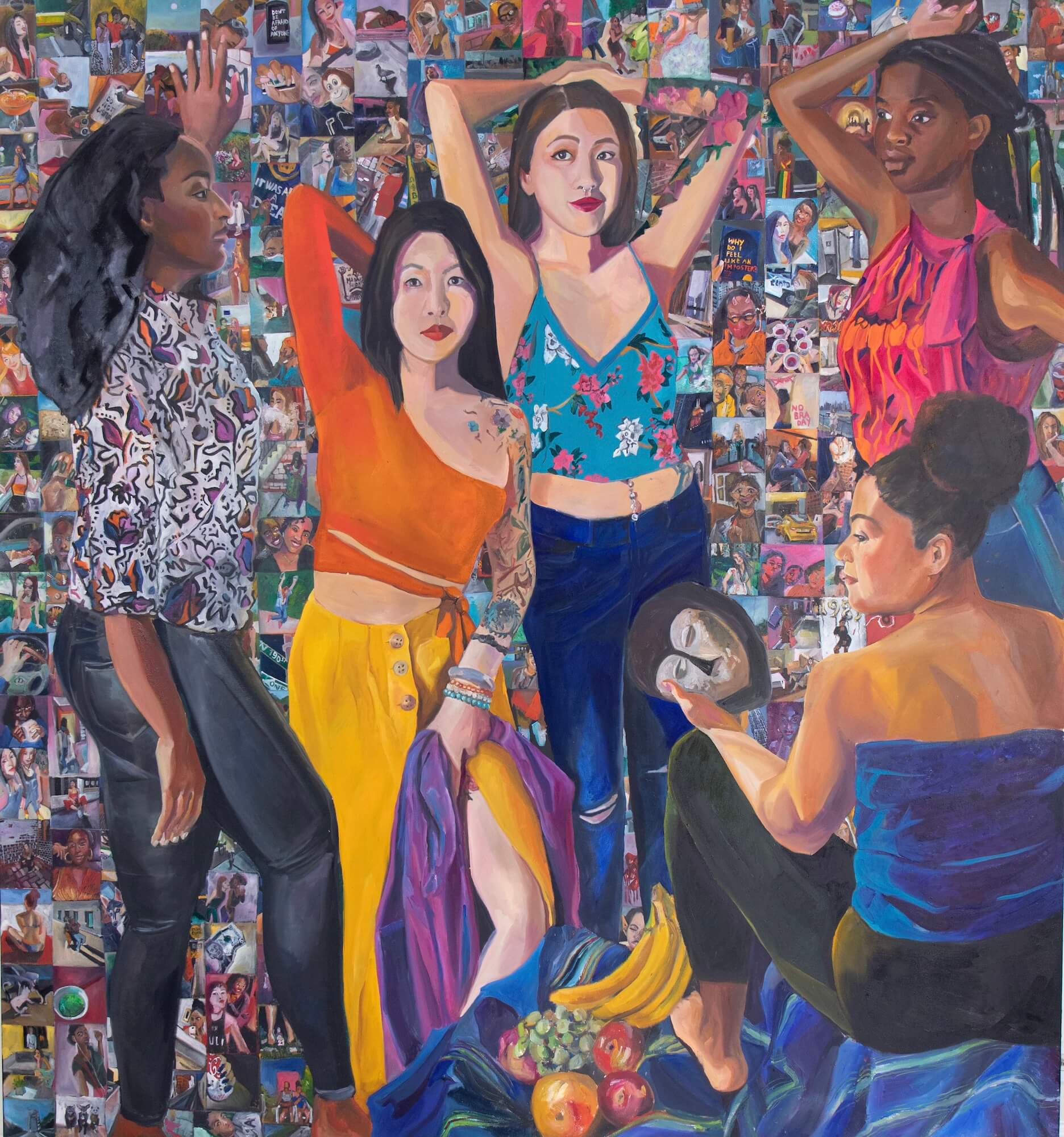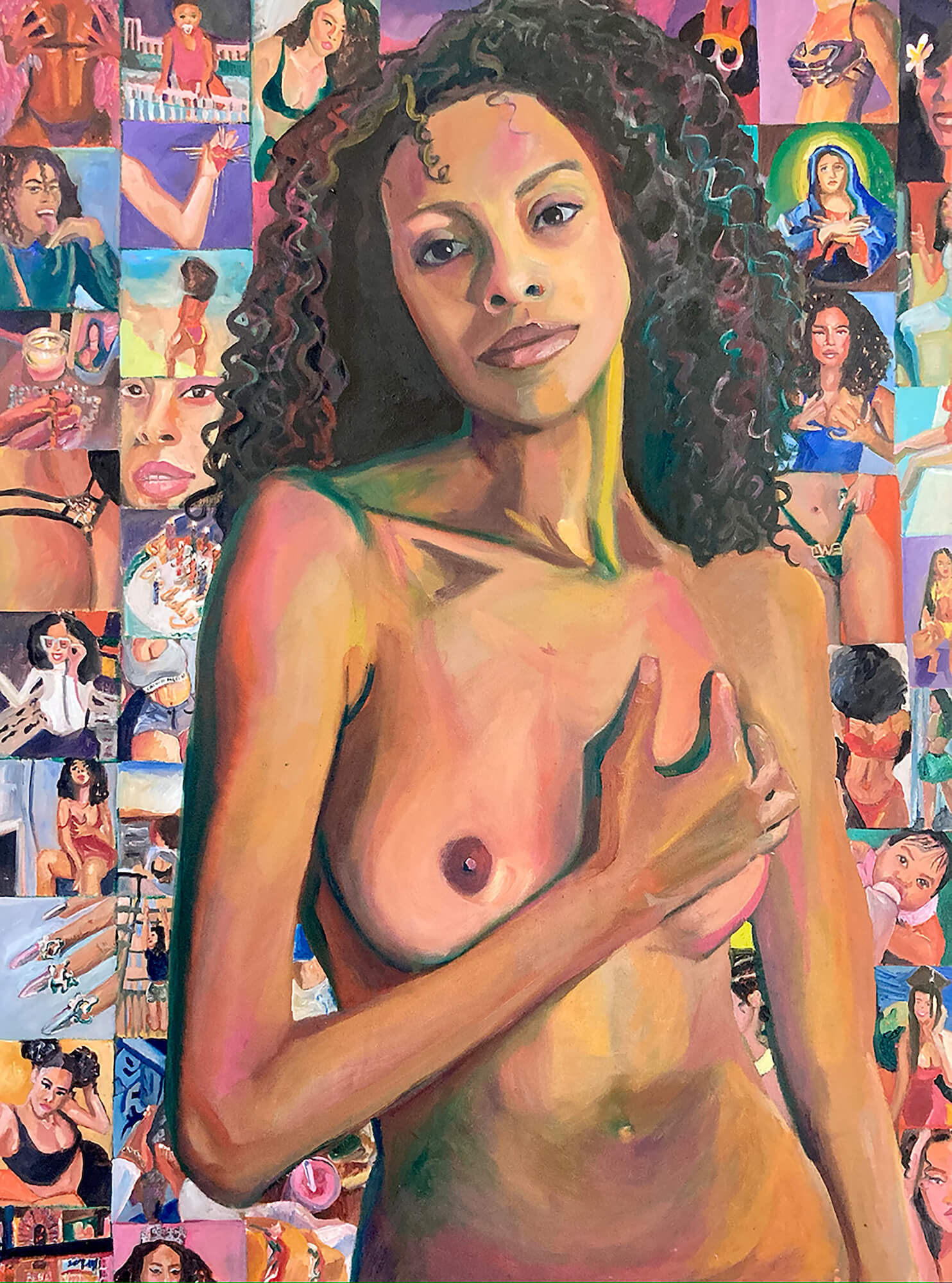
Our contemporary culture of instantaneity is fueled by fear of missing out, the impulse to document every single moment of our lives, our love for crowds and noise, our fear of silence, disconnection and emptiness… We live in Horror Vacui.
Horror Vacui features content that questions the representation of gender and identity in an age of superficiality, selfies and shared hearsay. It plays with the conflicting injunctions that are laid upon us. How can we figure ourselves out when society demands that we act and live within the limits of assigned role-play? Who are we in public, who are we alone?
A painter of portraits, Wibaux juxtaposes these works with her paintings of the Instagram feeds of her models so that the viewer can experience this contrast and decide which, if either, is more truthful in representing people.
“I want people to look at other people. It’s about empathy and I want people to feel connected as if the emotion on the painting could be their emotion,” says Wibaux. “All together, these paintings plays the empowering ability to control one’s narrative against the algorithms that determine who gets the attention.”
Born in Argentina, raised in Peru and Italy, French painter Wibaux has spent a great deal of her life abroad meeting new people and exploring new environments. Wibaux’s approach to encountering and eventually capturing her subjects borders on social experimentation. It is existential documentation of the human condition. Self-taught, Marguerite Wibaux started her career with a solo show by French cultural institution in Boston in 2018. Since then, she has been part of multiple group shows in France, Milan and New York. Most recently her solo presentation “Horror Vacui” at Spring/Break art fair New York was reviewed by Maria Brito as “Top 5 emerging artist to discover”.

When did you first begin creating art?
I have been creating art since my childhood, having grown up in a very artistic family. My mother is an artist and my grandmother was an art historian. Nevertheless, it took me 10 years and a move to the United States to own my artistic-self and dedicate myself full-time to it.
When did you first consider yourself to be an artist?
First time I approached a stranger, and asked him to come sit for me. The portrait I did out of this sitting was better than anything I thought I was able to do. There was an energy in the encounter that channeled in the painting and made it a piece of art. From then on, it is the way I proceed. Social experimentation is a crucial part of my art practice.

Who or what influences your practice?
I am interested in the dynamics of gender and power within social media. I am fascinated by the mediasphere and visual language of internet. In my current body of work, I surround the portraits of my models by hundreds of paintings of their Instagram feed.
I also like to play with the pathways of western art iconic historic imagery, from Medieval and Baroque aesthetics to French Modern painting, even though they mostly carry a white-centered patriarchic representation of the world.
Images carry myths and ideas, and I like to create contrasts and paradox, so people can step back and start thinking about the meaning of the images that surrounds them.
Tell us about a specific moment in your career that you would consider a turning point.
I believe a career is made over time through work and endurance. I don’t believe in turning points. You plants seeds, water them, and at some point, you bloom. That being said, there are a few important steps that marked my path that I am grateful for: the first solo show, first time participating in a fancy art fair, first five digits sale, first publications…yet I still have lots of other firsts ahead of me!
Where would you like to see your artwork go in the future?
My work addresses issues of identity and belonging in the digital age, while incorporating questions about the representation of women and diversity. I believe in the power of images to shift representations.
Hence, I want my art to be in the social dialog of our times, visible by as many people as possible. In media, social media, group shows, galleries, fairs, and hopefully one day in museums. I especially love the Brooklyn Museum for their curation and the fact that’s it's free; anybody can get in and experience great art.















